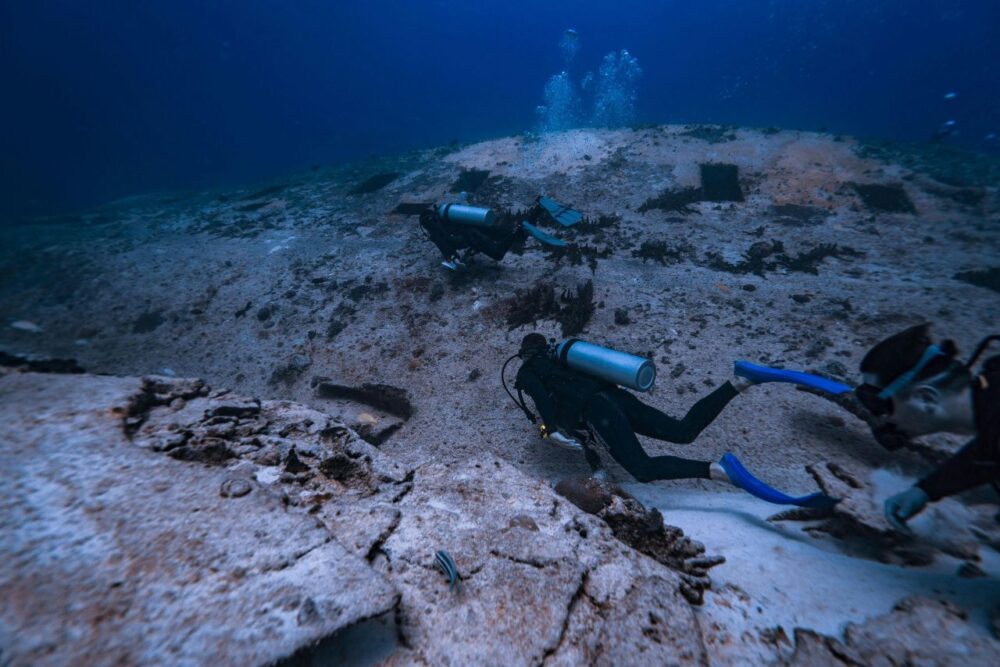IN RECENT YEARS, SCIENTIFIC INTEREST IN THE DEPTHS OF THE MEDITERRANEAN, WITH ITS SUBMERGED MOUNTAINS, HAS GIVEN RISE TO INITIATIVES AIMED AT THE CONSERVATION AND ENHANCEMENT OF MARINE BIODIVERSITY. IN THIS CONTEXT, THE MISSION UNDERTAKEN BYSUPERIOR INSTITUTE FOR ENVIRONMENTAL PROTECTION AND RESEARCH (ISPRA) MARKS A SIGNIFICANT STAGE IN THE LANDSCAPE OF ITALIAN OCEANOGRAPHIC RESEARCH. THE PROJECT IS FINANCED BY THE NATIONAL RECOVERY AND RESILIENCE PLAN (PNRR) UNDER THE MARINE ECOSYSTEM RESTORATION INITIATIVE (MER)
ISPRA in search of seamounts in the unexplored depths of the Mediterranean
The project ISPRA stands out for its highly innovative and technological approach, which aims to enhance and preserve the marine biodiversity of seamounts in Mediterranean.
The program uses cutting-edge equipment, including high-resolution sonar and autonomous underwater vehicles, to collect detailed data on the physical and biological characteristics of these underwater formations.
This method not only allows us to carry out an accurate census of the marine species present, but also allows us to monitor the impact of anthropic activities (i.e. caused by human action) on these delicate ecosystems.
Over the next two years, the initiative will focus on 79 underwater mountains, known as “seamounts”, which extend over 13 thousand km², with depths varying between 200 and 2 thousand metres.
The scientific adventure began from the port of Trapani, from where the ship set sail R/V Astreaa scientific vessel equipped for oceanographic research.
Headed towards the Cimotoe submerged volcanooff the coast of Pantelleria, the vessel has embarked on a journey that will not only explore the geological characteristics of these structures, but will also serve to map the habitat of a variety of unique marine species.
But let’s get to the focus of the expedition, that is, the presence of underwater mountains.
The importance of seamounts
Seamounts, also known as seamountsare geological formations that rise from the ocean floor, reaching considerable heights, sometimes even higher than those of the emerged mountain peaks.
These structures not only enrich the geomorphology of the seabed, but play a very important role in marine ecosystems, acting as essential habitat for a wide range of marine species, including deep-sea fish, crustaceans, sharks and cephalopods.
In fact, their conformation favors the formation of colonies of corals and sponges, organisms that form the basis of complex marine ecosystems. Additionally, the height of submerged mountains can influence ocean currents and nutrient availability. Which further contributes to the biological productivity of the area.
Limited knowledge
Despite their indisputable ecological importance, knowledge regarding these underwater environments remains remarkably limited. Much of the available information focuses on the geomorphology and physical appearance of these formations, while data relating to biological biodiversity is scarce.
This gap in scientific knowledge is particularly worrying, as seamounts could be vulnerable to various threats, including overfishing, pollution and climate change.
The fragility of marine ecosystems
Intensive fishing practices, particularly the use of invasive nets and fishing gear, can irreparably damage these delicate habitats. The turbulent currents surrounding seamounts, although conducive to the proliferation of life, can become a double-edged sword if human activities are not carefully managed.
The vulnerability of these ecosystems requires the implementation of more rigorous and targeted protection measures, in order to preserve biodiversity and ensure the sustainability of marine resources. In this context, the ISPRA project intends to identify the areas most deserving of protection, following European provisions, including the Habitat Directive (92/43/CEE) e.g European Biodiversity Strategy 2030.
Mapping and monitoring in search of biodiversity
As mentioned, the heart of the project of the Higher Institute for Environmental Protection and Research is represented by the detailed mapping of deep marine habitats and the characterization of the biodiversity present on the seamounts.
The data collected will allow you to create three-dimensional modelsuseful for outlining the geomorphological conformation of the seamounts. Starting from January, the first analyzes will be complemented by surveys conducted using an underwater robot, equipped with advanced instrumentation to carry out real-time visual observations of ecosystems.
In short, ISPRA’s mission is not limited to simple exploration: the initiative represents a concrete example of how science and technology can come together to promote conservation and sustainabilityso as to preserve the beauty and vitality of marine ecosystems for the future.

